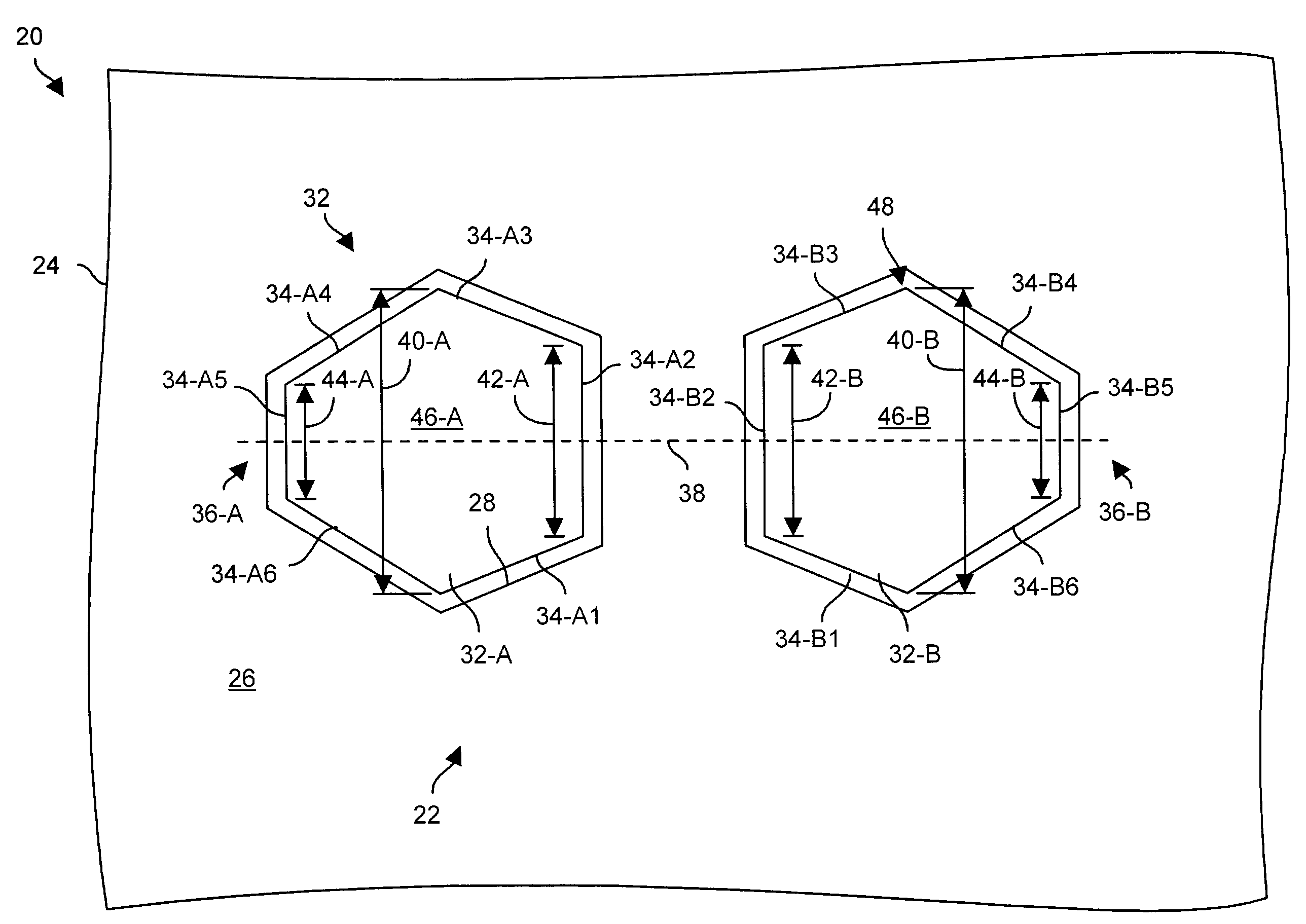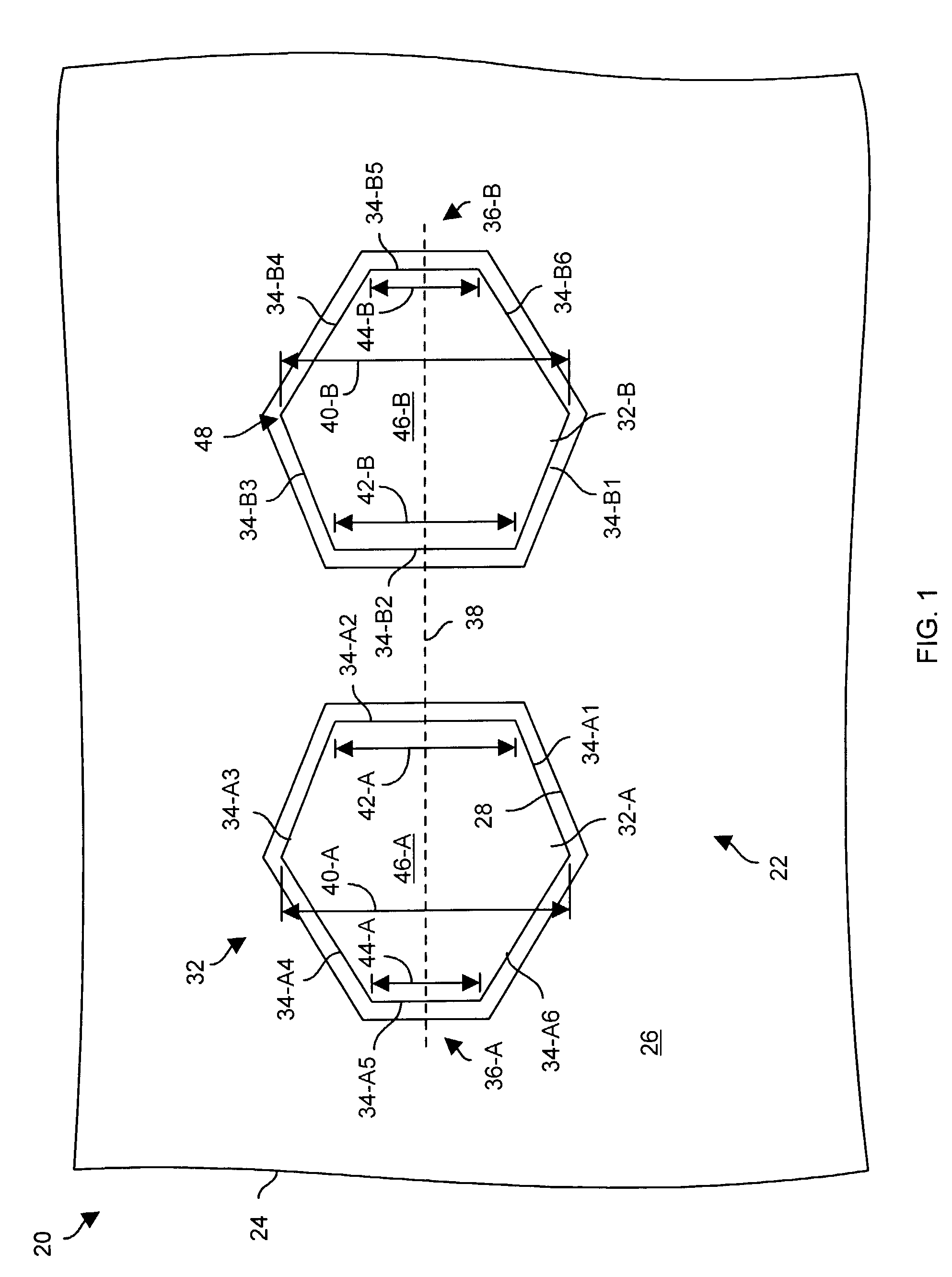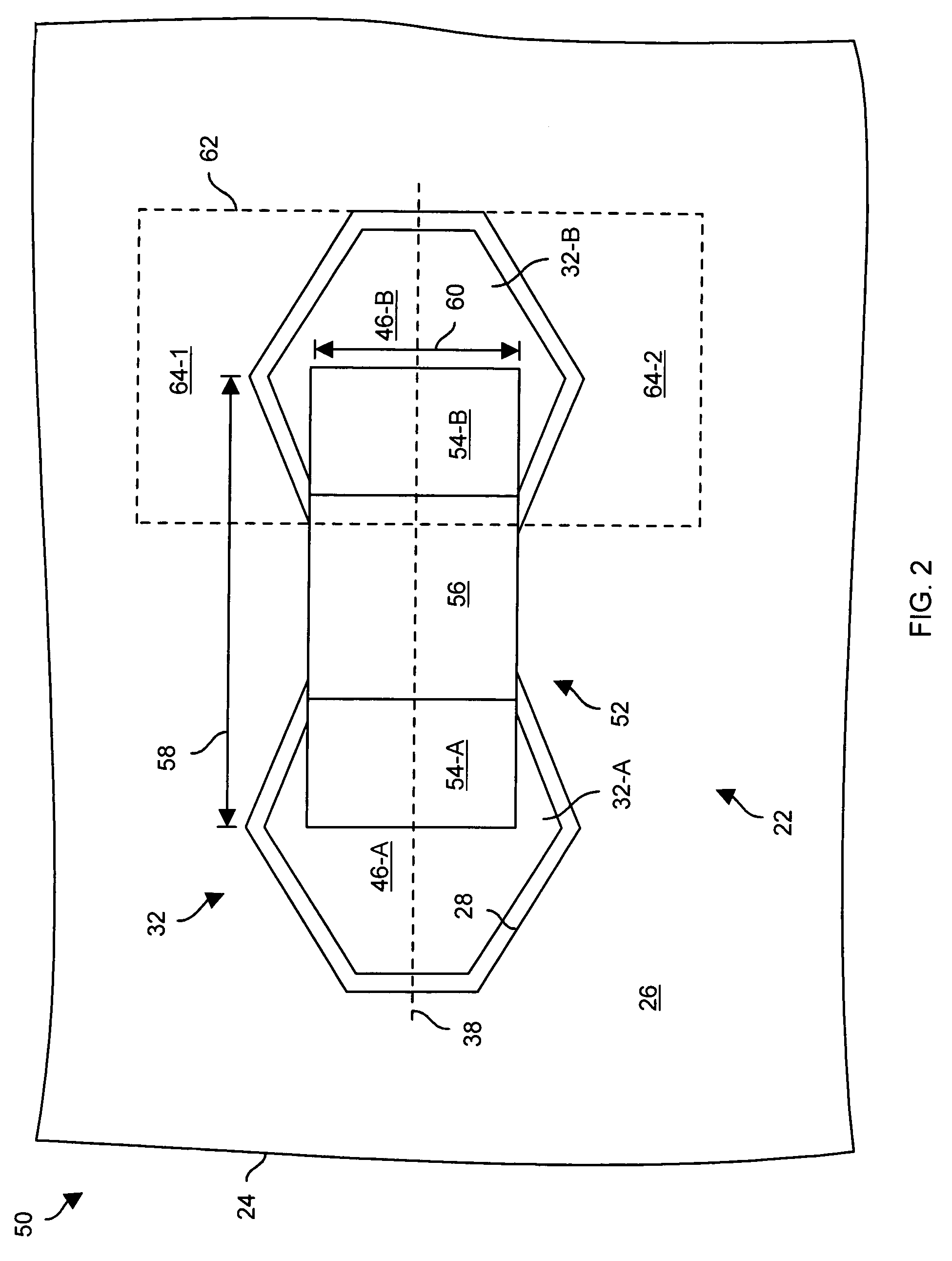Techniques for mounting a circuit board component to a circuit board
- Summary
- Abstract
- Description
- Claims
- Application Information
AI Technical Summary
Benefits of technology
Problems solved by technology
Method used
Image
Examples
Embodiment Construction
[0026]Embodiments of the invention are directed to techniques for mounting a circuit board component to a circuit board using generally trapezoid-shaped pads. The use of such pads (i) enables reliable mounting of circuit board components using a conventional soldering process such as printed paste soldering, as well as (ii) inhibits improper movement of the circuit board component if solder joints holding the component to the pads re-flow. Accordingly, the use of such techniques are well-suited for circuit board manufacturing processes which involve multiple heating phases (e.g., multiple passes through an oven resulting in re-melting of earlier-formed solder joints). Additionally, the use of such pads alleviates the need for alternative soldering solutions such as the use of high-temperature solder in an initial higher-temperature soldering process which could damage components due to higher temperature stresses. The techniques of the invention tend to raise circuit board manufactu...
PUM
 Login to View More
Login to View More Abstract
Description
Claims
Application Information
 Login to View More
Login to View More - R&D
- Intellectual Property
- Life Sciences
- Materials
- Tech Scout
- Unparalleled Data Quality
- Higher Quality Content
- 60% Fewer Hallucinations
Browse by: Latest US Patents, China's latest patents, Technical Efficacy Thesaurus, Application Domain, Technology Topic, Popular Technical Reports.
© 2025 PatSnap. All rights reserved.Legal|Privacy policy|Modern Slavery Act Transparency Statement|Sitemap|About US| Contact US: help@patsnap.com



